The only madrasah for women
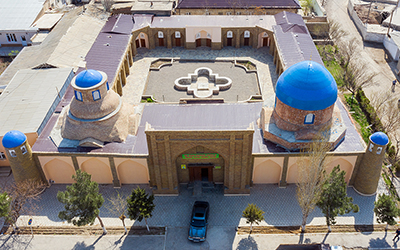
Now it is a museum, renovated in 2019. But at one time, it was an adolescent prison, and even before that, women from the East studied there. “Bibi Oim” Madrasah is located in the north of Tajikistan and is a historical and cultural monument of the 19th century.
"Bibi Oim" is the only madrasah where women were educated in what is now Tajikistan. Its construction, in the city of Kanibadam, was begun by the theologian Domullo Mir Olim from 1824-1825.
Domullo named the madrasah, at that time the second largest such institution for women, in honor of his daughter Bibi. Historians believe that she also taught young girls there, and in total, the madrasah employed four teachers, a housekeeper, a Sufi (Muslim mystic), two imams, a guard, and a barber.
For 100 years, thousands of girls were successfully educated there. They studied the Quran, Arabic and Persian languages, literature, and religious traditions. This educational institution is unique also because it demonstrates how girls in the early 19th century received an education along with men.
Now, Oim Madrasah is a cultural monument of Tajikistan and has been designated one of the historical and architectural objects protected by the state.
Built of burnt bricks and decorated with carved wooden doors, the madrasah had a vast yard from which you could access all the rooms: living spaces, study rooms, and the library. Its massive brick walls were decorated with portals, arches, and corner towers, the domes of which were crowned with colored tiles. Inside the madrasah was a square laid out with tiles.
In contrast to the artful exterior decoration, the living quarters looked quite different: dormitory rooms were narrow and dark and could barely accommodate 2 people. Each had one door, located inside the arch, through which light penetrated. At the entrance to each there was a place for washing.
Madrasah built on almond land
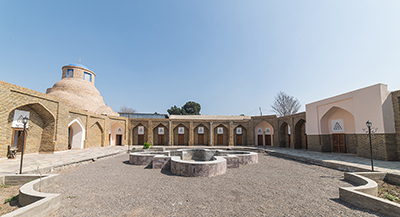
The town where the madrasah was built is one of the oldest settlements in Central Asia, situated in the southwest Ferghana Valley in the Sughd region. The beautiful city of Kanibadam is located 79 kilometers to the east of Khujand, Tajikistan’s second largest city.
The name of the city comes from the word "bodom", meaning “almonds”, for which it is famous. Arab historian and poet Yakuti Khomavi (Yokuti Khamavi) wrote in the 13th century: "Kand, because of the abundance of almonds, became known as Konibodom”, translated as “a city rich with almonds”. Here, the almonds are very tasty and have fragile shells that can be cracked with your fingers.
In 1463, Kanibadam was first mentioned in documentary sources as one of the branches of the Great Silk Road. Crafts and trade with many Asian countries flourished there in the 15th century.
Education in the Muslim East
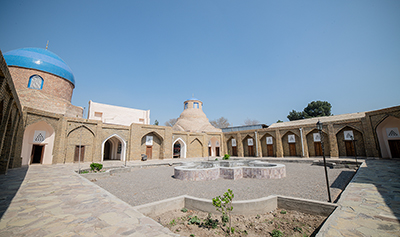
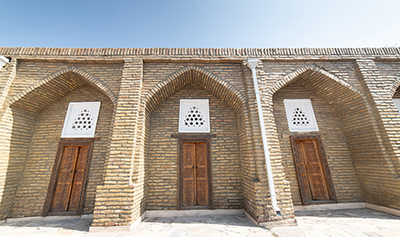
The city’s rich history made it an ideal location for a women’s madrasah. An educational Muslim institution, madrasah translated from Arabic means “place of teaching”. A primary or secondary school at the time was called a “mekteb” (maktab). At these Muslim religious and educational institution, scientific treatises were translated into Arabic, and pupils studied philosophy, medicine, mechanics, and astronomy.
Young men who graduated from maktabs could continue their studies in the madrasah, which lasted from 8 to 20 years. Those who completed the full course usually held positions of Kazi (people's judge) or their assistants. Some madrasah graduates were given positions as imams (abbots) of mosques, while others stayed with the madrasah.
Muslim women played an important role in the establishment of many madrasahs. For example, the Ayubid dynasty opened 160 madrasahs and mosques in Damascus in the 12th and 13th centuries. The construction of madrasahs and their provision were considered an act of piety and godliness.
According to the 12th century scientist Ibn Asakir, by the Middle Ages women in Islam already had an opportunity to receive an education. He wrote that women could become scientists or teachers and study freely.
Women's education in Islamic countries has its origins in the wives of Muhammad: Khadija was a successful businesswoman and Aisha was an expert on hadith (the words and deeds of Muhammad).
From the 19th to the 21st century


Tajik architecture has almost a 5,000 year history. Unfortunately, despite the historical and cultural significance, few cultural monuments remain and are available to researchers and tourists. One of them, fortunately, is Oim Madrasah.
After the October Revolution, “Bibi Oim” was converted into a prison for adolescents. Before it was restored, visitors could notice barbed wire and high walls. After Tajikistan’s independence from the Soviet Union in 1991, the government made several attempts to restore the building in Tajikistan but suffered from insufficient funds.
The U.S. Embassy in Tajikistan helped restore the madrasah under the Ambassador's Fund for Cultural Preservation (AFCP) program. The program was founded by the U.S. Congress in 2001 with the goal of preserving cultural monuments and traditional cultural expressions in developing countries around the world. Since 2001, over 900 sites have been restored in 200 countries.
The restoration of Oim Madrasah took place between 2017 and 2019 and cost around $77,000. In the process, the premises were cleared of debris, the walls were restored, and the building’s roof was repaired. With the completion of restoration work, Tajikistan boasts an expanded map for historical and cultural tourism.
Today, “Bibi Oim” madrasah is a museum, supervised by the Ministry of Culture of Tajikistan.

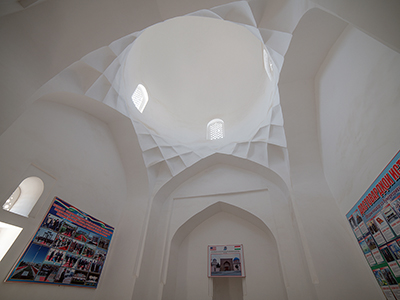
Years of construction: 1824-1825
Location: Kanibadam, Tajikistan
Construction Initiator: Domullo Mir Olim.
Origin of the name: Domullo's daughter Bibi Oim
Restoration: 2017-2019



